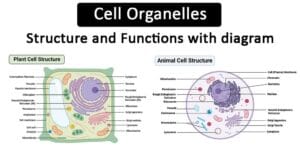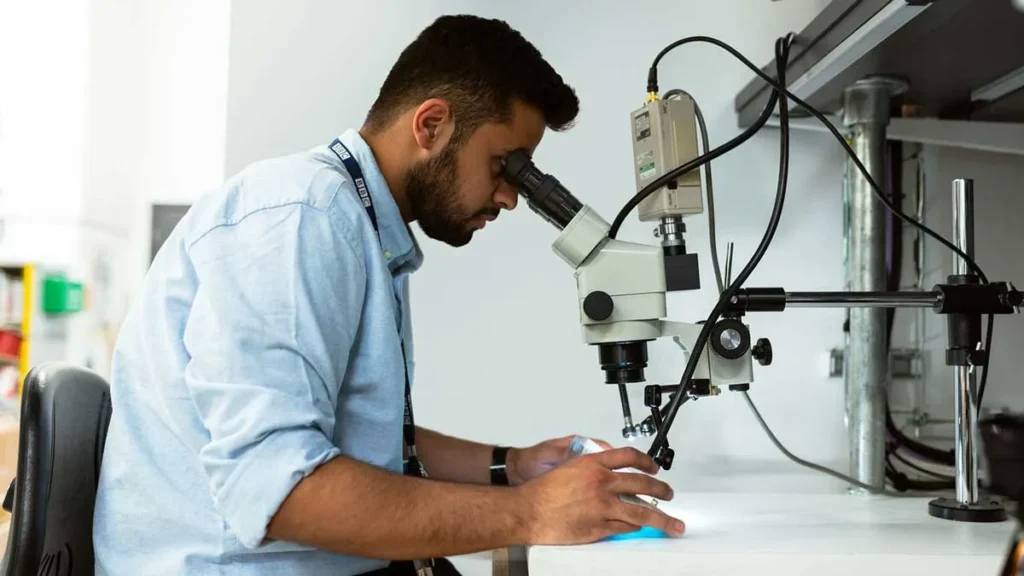Mitochondria are oxygen-consuming, ribbon-shaped organelles of great significance that float freely within the cell. These organelles are known as the “powerhouse of the cell” because they provide all the essential biological energy by oxidizing available substrates.
The enzymatic oxidation of chemical compounds within the mitochondria releases energy. Given their role as powerhouses, mitochondria are plentiful in areas where energy is critically needed, such as in the tail of sperm, muscle cells, liver cells (which can contain up to 1,600 mitochondria), microvilli, and oocytes (which can have more than 300,000 mitochondria).
On average, a cell contains about 2,000 mitochondria, making up roughly 25% of the cell’s volume.
Mitochondria were first described in 1890 by Richard Altmann, who referred to them as bioblasts. In 1897, Benda introduced the term ‘mitochondrion’.
- Presence: Found in higher plants, animals, algae, protozoa, and fungi, but not in bacteria.
- Structure: Filamentous and granular, with a lipoprotein framework.
- Functions:
- Energy metabolism via various enzymes and coenzymes.
- Protein synthesis facilitated by ribosomes.
- Cytoplasmic inheritance through mitochondrial DNA.
- Historical Observations:
- First observed by Kolliker in 1850.
- Isolated from insect muscles in 1888.
- Named ‘fila’ by Flemming in 1882.
- Alternate Names: Referred to as fuchsinophilic granules, parabasal bodies, plasmosomes, plastosomes, vermicules, bioblasts, and chondriosomes.
- Distribution: Generally uniformly distributed in the cytoplasm, but can vary by cell type and function.
- Cell Numbers:
- 50,000 in Chaos chaos.
- 140,000-150,000 in sea urchin eggs.
- 300,000 in amphibian oocytes.
- 500-1,600 in rat liver cells.
- Fewer in green plants due to chloroplasts.
- Special Types: Sarcosomes in myocardial muscle cells are numerous and large.
- Shape: Can be club-shaped, racket-shaped, vesicular, ring-shaped, or round, varying with physiological conditions.
- Fusion and Separation: Can fuse and separate, changing shape accordingly.
- Size: Typically 0.5 to 2.0 µm, occasionally up to 7 µm, challenging to observe under a light microscope.

Structure of Mitochondria
Mitochondria are mobile, dynamic organelles with a double-membrane structure, typically ranging from 0.5 to 1.0 micrometers in diameter. They consist of four distinct regions: the outer membrane, the inner membrane, the intermembrane space, and the matrix.
- Outer Membrane: This smooth membrane encloses the organelle.
- Inner Membrane: This membrane is highly folded into structures known as cristae, which significantly increase its surface area and enclose the matrix space.
- Intermembrane Space: The space between the outer and inner membranes.
- Matrix: The innermost compartment enclosed by the inner membrane.
The number and shape of mitochondria, as well as the number of cristae, can vary widely between different cell types. For instance, tissues with high oxidative metabolism, such as heart muscle, have mitochondria with a large number of cristae. Even within the same type of tissue, mitochondrial shape can change depending on their functional state.
Both the outer and inner mitochondrial membranes are rich in proteins. The structural complexity of mitochondria includes the mitochondrial membrane and the mitochondrial chamber, facilitating their vital role in energy production.
Mitochondrial Membrane
The mitochondrial membrane consists of two distinct membranes:
a. Outer Membrane
- Structure: Smooth membrane
- Composition: 40% lipids, 60% proteins
- Permeability: Permeable due to the presence of pores or porins
b. Inner Membrane
- Composition: 20% lipids, 80% proteins
- Permeability: Selectively permeable
- Structure:
- Folded inwards, forming rough cristae (numerous finger-like projections)
- Contains tennis racket-like particles previously named as inner membrane subunits, F0-F1 particles, elementary particles, or oxysomes
- Termed electron transport particles (ETP) by Parsons in 1963
- Each mitochondrion contains approximately 104-105 of these particles
- Components of Elementary Particles:
- Base (F0 particle):
- Made up of hydrophobic proteins
- Embedded in the lipid molecules of the membrane
- Head (F1 particle):
- Made up of five types of polypeptides
- Contains the enzyme ATPase or ATP synthetase, which aids in the formation of ATP from ADP and inorganic phosphate through oxidative phosphorylation
- Stalk: Connects the base and head, containing coupling factors that link the respiratory chain with the elementary particle
- Base (F0 particle):
The intricate structure of the inner mitochondrial membrane, including its numerous cristae and associated particles, plays a crucial role in the organelle’s function in energy production through oxidative phosphorylation.
Mitochondrial Chambers
Mitochondria have two main chambers: the outer chamber and the inner chamber.
a. Outer Chamber (Peri-Mitochondrial Space)
- Location: Between the outer and inner mitochondrial membranes
- Contents: Fluid containing a few enzymes
b. Inner Chamber
- Location: Inside the inner membrane
- Contents: Semi-fluid matrix containing:
- Water
- Minerals
- Protein particles
- 70S ribosomes
- RNA
- Circular DNA
- Enzymes
Mitochondrial Matrix
The mitochondrial matrix, a colloidal liquid area encircled by the inner membrane, contains:
- Soluble Enzymes of the Krebs Cycle: These enzymes completely oxidize acetyl-CoA to produce CO2, H2O, and hydrogen ions.
- Hydrogen Ions: These ions reduce NAD and FAD molecules, which then transfer hydrogen ions to the respiratory or electron transport chain where oxidative phosphorylation occurs, generating ATP.
Key Components in the Mitochondrial Matrix
- mtDNA: Mitochondria contain single or double circular and double-stranded DNA molecules called mitochondrial DNA (mtDNA).
- Mitoribosomes: The matrix also contains 55S ribosomes, also known as mitoribosomes.
- Protein Synthesis: Mitochondria can synthesize approximately 10% of their proteins using their own protein-synthetic machinery, classifying them as semi-autonomous organelles.
Functions of Mitochondria
- Energy Storage and Release:
- Mitochondria store and release energy in the form of ATP (Adenosine Triphosphate) through the oxidation of carbohydrates, proteins, and fats. This energy is utilized in various metabolic activities, earning mitochondria the nickname “powerhouse of the cell” or “storage batteries of the cell.”
- Heme Formation:
- Mitochondria are involved in the formation of the heme component of hemoglobin.
- Cellular Respiration and Intermediate Product Synthesis:
- During cellular respiration, mitochondria produce intermediate products necessary for synthesizing cytochromes, chlorophyll, ferredoxin, steroids, alkaloids, pyrimidines, and other compounds.
- Calcium Storage and Release:
- Mitochondria can store and release calcium ions, playing a crucial role in cellular calcium homeostasis.
- Amino Acid Formation:
- Mitochondria assist in the formation of amino acids.
- Fatty Acid Synthesis:
- Several fatty acids are synthesized within the mitochondrial matrix.
- Oogenesis:
- During oogenesis, mitochondria contribute to the formation of the yolk.
- Spermatogenesis:
- Mitochondria aid in forming the middle part of sperm during spermatogenesis.
- Maternal Inheritance:
- Mitochondria facilitate the direct transfer of traits from mothers to offspring through maternal inheritance.
- Detoxification in Liver Cells:
- Mitochondria in liver cells help detoxify ammonia using specific enzymes.
- Thermogenesis:
- Mitochondria are sites of heat generation, a process known as thermogenesis.
- Cell Death and Dysfunction:
- Dysfunctional mitochondria can lead to abnormal cell death, affecting organ function.
- Hormone Formation:
- Mitochondria contribute to forming parts of hormones such as testosterone and estrogen.










